“Nine new Boeing P-8 Poseidon Maritime Patrol Aircraft to increase further the protection of our nuclear deterrent and our new aircraft carriers. These aircraft will be based in Scotland and will also have an overland surveillance capability.”
In welcome news for many, the Strategic Defence and Security review confirmed that the United Kingdom will once again operate an effective maritime patrol aircraft.
The P-8 Poseidon, developed by Boeing, is designed to conduct anti-submarine warfare (ASW), anti-surface warfare (ASUW), and shipping interdiction, along with an electronic signals intelligence (ELINT) role. This involves carrying torpedoes, anti-ship missiles and other weapons.
The history of the aircraft dates back to June 2004, when the US Navy announced the selection of the Boeing multimission maritime aircraft, 737 MMA, and awarded a contract to Boeing for the system development and demonstration phase of the programme for the US Navy’s next-generation maritime surveillance aircraft. The aircraft was given the designation P-8A in March 2005.
Poseidon contains up to 7 crew computer consoles in its cabin, has an electro-optical and infrared sensor turret, a maritime surveillance radar and signal intelligence system. Its radar is capable of detection, classification and identification of ships, small vessels and surfaced submarines.
It also has coastal surveillance capability. The P-8 is fitted with advanced magnetic anomaly detection system for submarine tracking. The Poseidon can be used for search and rescue operations.
According to the US Navy, the aircraft in US service carries lightweight Raytheon Mk54 anti-submarine torpedoes. It may also carry other torpedoes, missiles, free-fall bombs, depth charges, mines, or sonbuoys in its weapon bay. Air-to-surface and air-to air missiles, such as Harpoon anti-ship missiles, SLAM or AGM-65 Maverick land attack missiles, and AIM-9 Sidewinders or AIM-120 AMRAAMs will be carried on the underwing hardpoints.
It has been speculated that the UK may elect to integrate Storm Shadow on the aircraft, as it had planned to do with Nimrod prior to the cancellation of the aircraft.
It is expected that up to 117 P-8A MMA aircraft are to be purchased by the US Navy to replace the fleet of 196 P-3C Orion maritime patrol aircraft which are approaching the end of their operational lives. The initial operational capability of P-8A was achieved in November 2013.
In August 2012, it was first reported that Boeing saw the United Kingdom as a market for the P-8, following the cancellation of Nimrod MRA4. After speculation every few months that the UK was going to purchase the aircraft, the UK announced its intention to order nine P-8 aircraft.
P-8 Poseidon Quick Facts, courtesy of Boeing
- For the P-8, Boeing uses a first-in-industry in-line production system that leverages the best of Boeing Commercial and Boeing Defense for development and production.
- The P-8 can fly up to 41,000 feet and travel up to 490 knots.
- P-8 offers higher reliability – the 737 has a 99.8 percent dispatch rate, with more than 4,000 aircraft flying, and 6,600+ orders.
- The P-8 is engineered for 25 years/25,000 hours in the harshest maritime flight regimes, including extended operations in icing environments.
- The P-8 can fly in all flight regimes, and can self-deploy up to 4,500 miles from base without refueling.
- Dual CFM-56B commercial engines each provide 27,000 pounds of thrust, greatly enhancing climb and flight characteristics over turboprop equipped aircraft.
- Each engine is equipped with a 180KVA engine driven generator. Combined with the 90KVA commercial APU, this provides 450KVA of power. P-8 possesses significant growth capacity for equipment with excess onboard power and cooling capacity.
- P-8 has twice the sonobuoy processing capability and can carry 30 percent more sonobuoys than any maritime patrol and reconnaissance aircraft currently flying.
- P-8 has the ability to control unmanned air vehicles (level 2 control-receive) to extend sensor reach.
- P-8 offers commonality with 737 fleet and other military platforms that use the 737 airframe.
The aircraft are to be based at RAF Lossiemouth in Scotland and be used to protect the UK’s nuclear deterrent and new aircraft carriers. The P-8s are also to perform search-and-rescue missions and conduct overland reconnaissance.
Deliveries of the P-8 Poseidon are to begin before 2020, with three being in service before 2023.
Whether the aircraft will carry UK weapons and sonobuoys has yet to be decided and it is also unclear whether the UK will have access to future ground-surveillance capabilities being developed for the P-8, however this is likely.


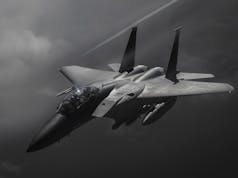

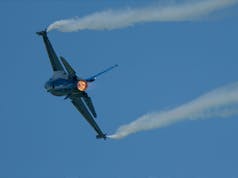
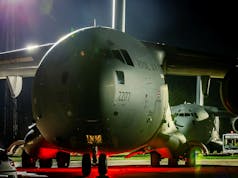
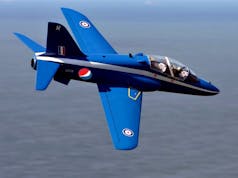
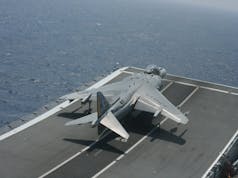










Will we get the bolt on kits, for ASW for the Order of the Protectors? To supplement the P8’s
https://www.flightglobal.com/news/articles/new-maritime-capability-developed-for-mq-9-417133/
Proctector may not automatically be Reaper based, Hermes is also a possibility?
https://ukdefencejournal.org.uk/protector-drone-to-be-reaper-derivative/
David good spot, missed that.
No mad boom ?
The aircraft have MAD capabilities.
Be great if they can carry Stormshadow
The Indian ones will have a MAD boom I believe?
MADras ? Chris Power ?
all the bluster and we could have had nimrods for a meesly 500million more and in service by now,narrow sighted mod and the tresury,the main reasons cost goe skyward
And in English?
Nimrod was massively over budget and riddled with flaws, one of which killed a whole crew. It was long past retirement, should’ve been replaced at least a couple of decades ago!
10 years late and still didn’t work…..
Simon Taylor Well, the P3 Orion is how old? I’d say that the original design was the Lockheed Electra from the 1960’s – 50 plus years ago!
The trouble with old British aircraft is that everything was made specifically for that aircraft and (I often found) that when robbing some part off one aircraft it never fitted any other. Thats why the whole Nimrod idea was flawed from the start. they had the jigs and they should have created new builds instead of the work creation exercise that the government gave to BAe in order to keep people in jobs. If they’d have created completely new builds with some borrowed Airbus systems and closer tolerances then Nimrod MR4 probably would have been cheaper, better and exportable. Unfortunately,… Read more »
The P-3, being turbo prop is a much simpler design, easier and cheaper to maintain, and hasn’t had so many flaws!
Can these hunt more submarines than George Ridley?
Likely that P-8 will be in service before the Nimrod MR4 would have managed to sort out its problems.
I remember the Nimrod crashing in Toronto at the Airshow, what a tragedy
Four MRA4 a/c could have been kept to protect the SSBN base. Instead they were broken up. While the UK will once again have a maritime patrol capability, the force of 9 a/c will be a far cry from the intended force of 21 a/c. If the P-8 is as capable as described, perhaps a future government will buy a few more.
The article states “It also has coastal surveillance capability. The P-8 is fitted with advanced magnetic anomaly detection system for submarine tracking.”
I believe I read somewhere that this capability is removed from the P-8a?
I also agree that by the time the Nimrods were scrapped, we had already paid for them so it served little to no function as a Cameron’s ‘cost saving’. Likewise with the Libya campaign, it would have been most cost effective to flown harriers from carriers than the Tornadoes flying from land bases in the UK/Cyprus. Another false economy by the government.